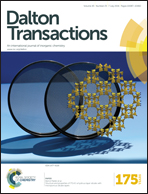Immobilization of polyoxometalates in crystalline solids for highly efficient heterogeneous catalysis
Abstract
Polyoxometalates (POMs) are a unique class of molecular metal–oxygen clusters with attractive architecture and tunable properties. Due to their strong acidity, redox chemistry, photoactivity, charge distribution and multielectron transformation, POMs have been used as efficient catalysts in a variety of chemical reactions. To meet the requirement of sustainable chemistry, great effort has been focused on immobilization of the active POMs on different solid supports to realize heterogeneous catalysis. This short review summarizes the recent progress on immobilization of POM moieties in crystalline solids with defined crystal structures, including organic–inorganic hybrid materials, POM-based inorganic crystalline solids and POM-encapsulated metal–organic frameworks (POM@MOFs), and their catalytic properties in oxidation, hydrolysis, cyanosilylation, photocatalysis and electrocatalysis. As illustrated in the text, these crystalline solids exhibit interesting catalytic properties, such as high activity, stability and selectivity, and simple recovery and easy recycling, which are much superior to those of the corresponding constituent species in most cases.


 Please wait while we load your content...
Please wait while we load your content...